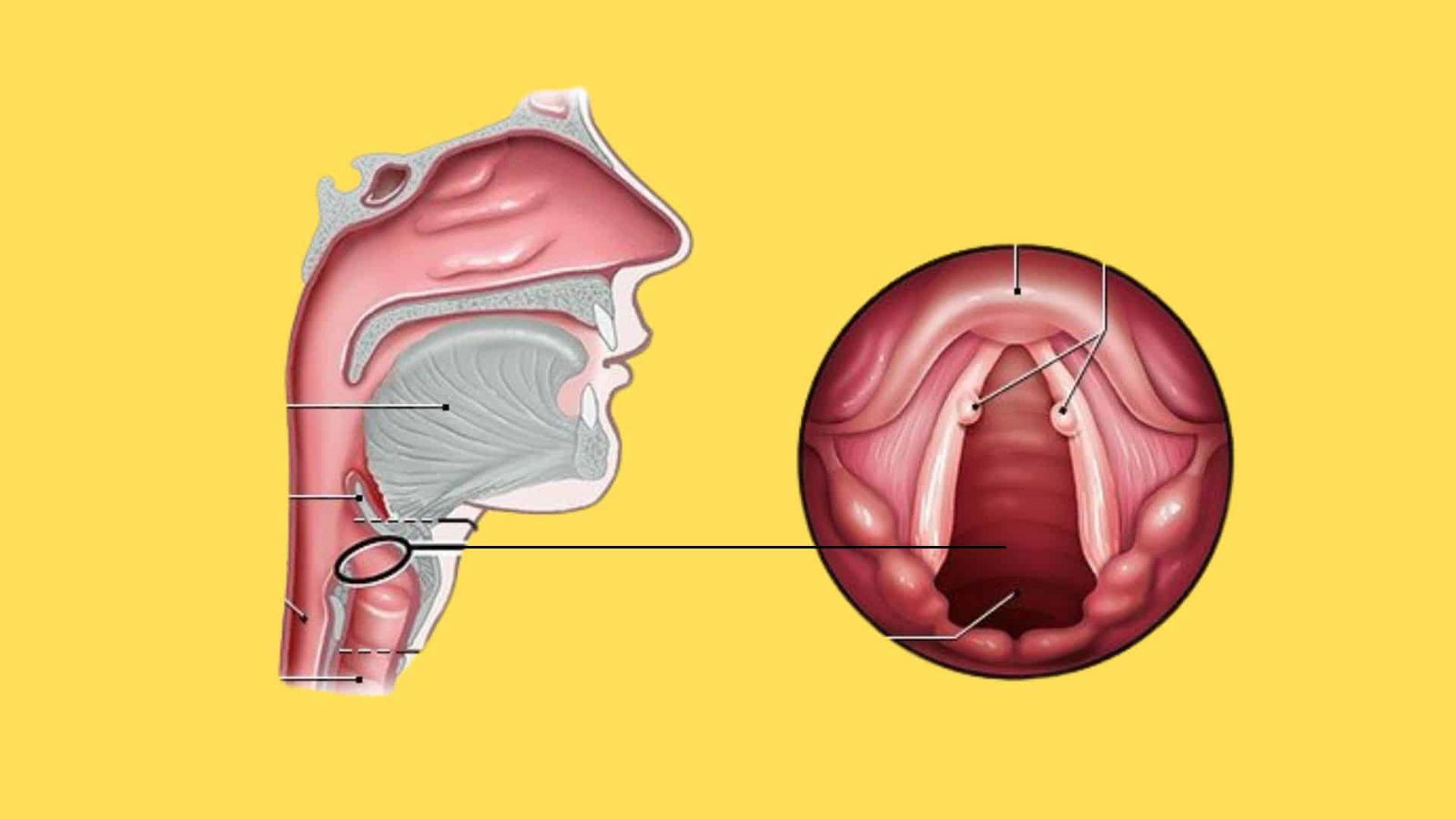Are you a singer, teacher, or someone who uses their voice extensively? You might have experienced hoarseness, vocal fatigue, or a change in your voice quality. These symptoms can be concerning, especially if they persist.
Many voice professionals worry about developing vocal nodules, but identifying them isn’t always straightforward.
This guide offers a comprehensive approach to vocal nodule self-assessment, empowering you to understand your vocal health better.
We’ll explain the signs and symptoms of vocal nodules, provide a simple self-assessment quiz, and offer guidance on when to seek professional help.
In the following sections, you’ll learn about the causes of vocal nodules, how to self-check, and what steps to take if you suspect you might have them. Let’s dive in and take control of your vocal health.
Understanding Vocal Nodules

Vocal nodules are noncancerous growths that develop on the vocal cords. These small, callous-like formations typically appear bilaterally and symmetrically on both vocal cords.
They are the result of chronic vocal abuse or misuse, often occurring in individuals who use their voices extensively or improperly.
Causes Of Vocal Nodules
- Vocal Abuse: Frequent yelling or speaking loudly can strain the vocal cords, leading to nodule formation.
- Overuse: Prolonged speaking or singing without adequate rest can cause stress on the vocal cords.
- Improper Techniques: Poor breathing techniques or inadequate vocal warm-ups can contribute to nodule development.
Symptoms Of Vocal Nodules
- Hoarseness: A persistent change in voice quality, often described as rough or husky.
- Raspy Voice: A rough or grating quality in the tone of the voice.
- Voice Fatigue: Feeling tired or strained after speaking or singing for short periods.
- Lump Sensation: A feeling of having something stuck in the throat.
- Sound Production Difficulty: Trouble hitting high or low notes or maintaining consistent vocal quality.
Risk Factors of Vocal Nodules
Occupational Hazards
- Singers: Professional or frequent singers who don’t use proper vocal techniques are at higher risk.
- Teachers: Constant speaking in loud environments can strain the vocal cords.
- Public Speakers: Frequent use of voice in large settings without proper amplification can lead to vocal stress.
Lifestyle Factors
- Smoking: Increases risk due to irritation and drying of the vocal cords.
- Dehydration: Insufficient water intake can affect vocal cord function and lubrication.
Medical Conditions
- Reflux Disease: Acid reflux can damage vocal cords, increasing nodular susceptibility.
- Allergies: Untreated allergies can lead to chronic throat clearing, which can irritate the vocal cords
The Need for Early Self-Assessment and Detection

Immediate Identification
- Early Signs: It is crucial to be aware of changes in your voice, such as persistent hoarseness or a raspy quality. These subtle alterations can be the first indicators of vocal nodules.
- Voice Strain: Recognizing fatigue or discomfort after speaking is essential, especially if it’s a new development. This could signal the early stages of nodule formation.
Preventive Measures
- Minimise Damage: Addressing symptoms early can prevent the worsening of vocal nodules. Quick action often leads to simpler, more effective treatments.
- Avoid Complications: Early detection reduces the risk of severe vocal damage. It can help prevent the need for more invasive treatments or long-term voice changes.
Prompt Intervention
- Professional Evaluation: Timely medical advice is crucial. Consulting a voice specialist or otolaryngologist can lead to an accurate diagnosis and treatment if you notice persistent symptoms.
- Effective Treatment: Early-stage treatments for vocal nodules are often more successful and less invasive. They may include voice therapy or lifestyle modifications rather than surgical options.
Benefits of Recognising Symptoms Early
Health Preservation
- Voice Quality: Early detection helps maintain a clear and strong voice. It allows for interventions that can preserve your natural vocal qualities.
- Overall Vocal Health: Recognising symptoms early contributes to long-term vocal health, preventing chronic issues that could affect your quality of life.
Efficient Treatment
- Less Invasive Options: Early detection often means using non-surgical treatments like voice therapy or vocal rest, avoiding more complex procedures.
- Shorter Recovery: With early intervention, recovery times are typically shorter, allowing you to return to normal vocal activities sooner.
Lifestyle Impact
- Continued Activities: Early recognition and treatment can help you maintain your professional and personal vocal demands without significant interruption.
- Stress Reduction: Addressing potential vocal problems early can reduce anxiety about your voice, improving overall well-being.
Cost Savings
- Reduced Medical Costs: Early treatments are generally less expensive than advanced interventions or surgeries for severe cases.
- Minimized Time Off Work: Early detection and treatment can mean less time away from work, which is especially crucial for those whose professions rely heavily on their voice.
Spotting the First Signs of Vocal Nodules

1. Hoarseness
Breathiness: Your voice may sound airy or weak, lacking strength and clarity.
Roughness: Your voice might have a scratchy or harsh quality different from your normal tone.
Duration: If hoarseness lasts more than two weeks, it’s a significant sign that warrants attention and potentially professional evaluation.
2. Rough or Raspy Voice
Texture: A rough or raspy voice feels coarse or grating, both to the speaker and the listener.
Sound Quality: The voice has a distinctive roughness disrupts normal speech patterns, making it sound harsh or gravelly.
Possible Causes: This symptom often results from strain due to excessive voice use or improper vocal techniques, which can contribute to nodule formation.
3. Voice Fatigue
Onset: Voice fatigue typically manifests as tiredness in the voice after short periods of speaking or singing, much earlier than usual.
Symptoms
- Strain: You may notice an increased effort needed to produce sound, even for routine conversations.
- Weakness: The voice often becomes progressively weaker as the day progresses, making it difficult to maintain consistent vocal quality.
Impact: This fatigue can significantly affect daily communication and professional activities, especially for those who rely heavily on their voice.
4. Sensation of a Lump in the Throat
Feeling: There’s a persistent sensation of a lump or tightness in the throat, often described as something “stuck” there.
Associated Discomfort
- Swallowing: You might experience difficulty or discomfort when swallowing.
- Speaking: The sensation may worsen during vocal use, particularly when speaking for extended periods.
Indicator: This feeling is often a sign of vocal cord irritation or growth, including nodules.
5. Difficulty in Producing Certain Sounds
Range Limitation: You may have trouble hitting high or low notes previously within your vocal range.
Voice Breaks: Uncontrolled changes in pitch or volume can occur, disrupting smooth speech or singing.
Sound Quality
- Muffled: Your voice might sound unclear or fuzzy, lacking its usual crispness.
- Strained: You may notice an increased effort required to produce sound, especially for certain pitches or volumes.
Conducting Your Self-Assessment Quiz
Step-by-Step Self-Assessment Process
1. Preparation
Environment: Choose a quiet space free from background noise to ensure accurate voice assessment.
Hydration: Drink water before starting to ensure your vocal cords are well-hydrated.
Recording Device: Use a reliable voice recorder or smartphone app to capture your voice.
2. Initial Check
• Baseline Recording: Read a standard passage aloud and record it. This serves as your reference point.
• Symptoms Log: Note any current discomfort, strain, or changes in your voice quality.
3. Daily Monitoring
• Morning and Evening: Record your voice twice daily, ideally at consistent times.
• Activity Log: Keep a diary of your vocal activities and any symptoms you experience throughout the day.
4. Symptom Evaluation
• Hoarseness: Listen for persistent changes in voice quality compared to your baseline.
• Fatigue: Note if your voice tires faster than usual during speaking or singing.
• Discomfort: Record any pain or sensation of a lump in your throat. • Sound Production: Test your ability to hit various pitches and maintain consistent sound quality.
5. Analysis
• Compare Recordings: Listen to your recordings over time, noting any changes or patterns.
• Symptom Correlation: Try to identify links between specific activities and the onset of symptoms.
Common Pitfalls and Limitations
1. Inconsistent Monitoring
• Irregular Recording: Skipping daily recordings can lead to gaps in your data, making it harder to track changes.
• Variable Conditions: Ensure consistency in your recording environment and hydration levels for accurate comparisons.
2. Subjectivity
• Self-Bias: Be aware that your perception of your voice might be influenced by personal concerns or anxiety.
• Lack of Objectivity: Assessing your voice without professional training can be challenging.
3. Misinterpretation
• Confusing Symptoms: Avoid confusing symptoms of other conditions (like allergies) with vocal nodules.
• Overlooking Minor Changes: Pay attention to subtle changes in your voice, as they can be significant early indicators.
When Self-Assessment Might Not Be Enough
1. Persistent Symptoms
• Duration: If symptoms last more than two weeks, seek professional evaluation.
• Severity: Significant pain or rapid deterioration of voice quality warrants immediate medical attention.
2. Complex Diagnosis
• Multiple Symptoms: Professional assessment is crucial when experiencing several overlapping symptoms.
• Unclear Causes: If you’re unable to determine the root cause of your vocal issues, consult a specialist.
3. Need for Specialised Tests
• Laryngeal Imaging: Techniques like a stroboscope, performed by professionals, provide detailed visualization of your vocal cords.
• Voice Analysis: Comprehensive assessment by a laryngologist or speech-language pathologist can offer insights beyond self-assessment capabilities.
Seeking Professional Evaluation When Having Vocal Nodules

Limitations of Self-Assessment
- Accuracy: While useful, self-assessment may lack precision due to subjective judgment. It’s challenging to evaluate one’s own voice objectively.
- Symptom Overlap: Many symptoms of vocal nodules can mimic other conditions, like allergies or reflux, making differentiation difficult without professional expertise.
- Missed Subtleties: Early-stage nodules or subtle changes in vocal quality might go unnoticed without specialized tools and trained observation.
Importance of Consulting Healthcare Professionals
- Expert Diagnosis: Healthcare professionals can accurately diagnose vocal nodules and differentiate them from other voice disorders.
- Comprehensive Assessment: Professionals use advanced techniques and equipment to evaluate your vocal health thoroughly.
- Timely Intervention: Early professional evaluation can prevent the worsening of vocal nodules and ensure appropriate, timely treatment.
Procedures Involved in Professional Evaluation
1. Laryngeal Imaging
• Stroboscopy: Uses high-speed imaging to visualize vocal cord vibration during speech.
• Advantages: Offers a detailed view, identifying even small nodules or irregularities on the vocal cords.
• Process: A camera with a strobe light captures slow-motion images of the vocal cords in action.
2. Voice Analysis
• Acoustic Analysis: Using specialized software, various voice parameters such as pitch, volume, and quality are measured.
• Perceptual Evaluation: An expert listens to and assesses voice quality and function based on standardized criteria.
• Comprehensive Assessment: Combines patient history, visual examination, and acoustic data for an accurate diagnosis.
Preventing Vocal Nodules
Vocal Hygiene Practices
- Hydration: To reduce strain, keep your vocal cords well-hydrated. Aim for at least eight glasses of water daily, increasing intake during heavy voice use.
- Avoid Throat Clearing: Frequent throat clearing can damage vocal cords. Instead, swallow or sip water to alleviate the urge.
- Voice Rest: Give your voice regular breaks, especially after intense use. Incorporate periods of complete vocal rest into your routine.
- Humidification: Use a humidifier in dry environments to maintain proper air moisture and keep vocal cords healthy.
Techniques for Prevention
- Proper Breathing: Learn diaphragmatic breathing to support your voice without straining throat muscles—practice controlled breathing exercises for vocal stability.
- Vocal Warm-Ups: Always warm up before extensive use. Use gentle humming, lip trills, and scales to prepare your vocal cords gradually.
- Amplification Use: Utilize microphones when speaking to large groups to avoid straining. Learn proper voice projection techniques.
- Proper Technique: Consider taking lessons to learn correct singing and speaking methods. Maintain good posture and breath support to minimize vocal strain.
Lifestyle Adjustments
- Stress Management: Incorporate relaxation practices like yoga or meditation to reduce vocal tension.
- Balanced Diet: Focus on nutrient-rich foods and limit irritants like caffeine, alcohol, and spicy foods.
- Adequate Rest: Ensure sufficient sleep for overall vocal health. Include periods of vocal rest, especially after intensive use.
- Avoid Smoking: Quit smoking and avoid secondhand smoke exposure, as both can damage vocal cords and increase nodule risk.
Treatment Options for Vocal Nodules

1. Voice Therapy
Voice therapy is often the first line of treatment for vocal nodules. It focuses on improving vocal techniques and habits to reduce strain and promote healing. Key components include:
Vocal Exercises
• Purpose: These exercises strengthen vocal cords and improve overall voice quality.
• Types: Common exercises include humming, lip trills, and pitch glides.
• Frequency: Daily practice is crucial, typically under the guidance of a speech-language pathologist.
Proper Breathing Techniques
• Diaphragmatic Breathing: Learning to use the diaphragm to support the voice reduces strain on the vocal cords.
• Breath Control: Exercises enhance vocal stability and reduce unnecessary tension.
• Exercises: Deep breathing exercises and sustained vowel sounds are often prescribed.
Voice Rest
• Importance: Periods of voice rest allow inflammation to subside and promote healing.
• Implementation: Scheduled periods of complete vocal rest are often recommended as part of the treatment plan.
2. Surgical Intervention (When Necessary)
In some cases, surgical intervention may be required:
Indications for Surgery
• Persistent Nodules: Surgery may be considered when nodules don’t respond to voice therapy.
• Severe Impact: When nodules significantly disrupt daily activities or professional voice use.
Surgical Procedures
• Microsurgery: Involves the removal of nodules using precise instruments under microscopic guidance.
• Laser Surgery: Utilizes laser technology for minimal invasiveness and precision.
Recovery from Surgery
• Post-Operative Care: Strict voice rest is typically required, followed by gradual reintroduction of vocal use.
• Follow-up: Regular check-ups are essential to monitor healing and prevent recurrence.
3. Long-Term Management and Recovery Strategies
Effective management of vocal nodules extends beyond initial treatment:
Ongoing Voice Therapy
• Maintenance: Continued practice of vocal exercises and proper techniques is crucial.
• Regular Check-Ins: Periodic sessions with a speech-language pathologist help maintain progress.
Lifestyle Adjustments
• Vocal Hygiene: Consistent hydration and avoiding irritants like smoke are essential.
• Stress Management: Techniques to reduce vocal strain caused by stress are important for long-term vocal health.
Monitoring Symptoms
• Self-Assessment: Regular self-checks for signs of hoarseness or discomfort help catch issues early.
• Professional Evaluation: Annual or semi-annual visits to a laryngologist are recommended for ongoing monitoring.
4. Adherence to Voice Therapy Recommendations
Successful treatment and prevention of recurrence heavily depend on adherence to therapy recommendations:
Consistency
• Daily Practice: Incorporating vocal exercises into daily routines is crucial for long-term success.
• Adherence: Closely following professional guidance ensures optimal results.
Record Keeping
• Progress Tracking: Maintaining a log of symptoms and improvements helps assess treatment effectiveness.
• Feedback: Sharing progress with healthcare providers allows for timely adjustments to the treatment plan.
Support Systems
•Professional Support: Ongoing communication with voice therapists provides guidance and motivation.
• Peer Support: Joining support groups for individuals with similar conditions can offer emotional support and practical tips.
Conclusion
In conclusion, being aware of your vocal health is crucial, especially if you’re a singer, teacher, or someone who uses their voice extensively.
You can catch potential issues early by understanding the signs of vocal nodules and conducting regular self-assessments.
If you experience persistent hoarseness, voice fatigue, or difficulty producing certain sounds for more than two weeks, it’s time to consult a laryngologist.
Early detection and treatment can prevent more serious vocal cord damage and ensure a quicker recovery.
Take charge of your vocal health today. Start by implementing the preventive measures we’ve discussed, such as proper hydration, vocal rest, and avoiding throat clearing.
Your voice is unique—protect and nurture it will serve you well for years.
Frequently Asked Questions
What Happens if Vocal Nodules Go Untreated?
Untreated vocal nodules can lead to permanent voice changes, increased hoarseness, and fatigue. They may also grow larger, potentially requiring surgery and causing long-term damage to your vocal cords.
How Long Can Vocal Nodules Last?
Vocal nodules can last for weeks or months if untreated. With proper care and voice rest, small nodules may heal in 6-12 weeks. Larger or chronic nodules may require longer treatment or surgery.
What Is the Recovery Time for Vocal Nodule Surgery?
Recovery from vocal nodule surgery typically takes 2-3 weeks. Full voice use may resume after 4-6 weeks. Complete healing and optimal voice quality can take up to 3 months with proper care.




















